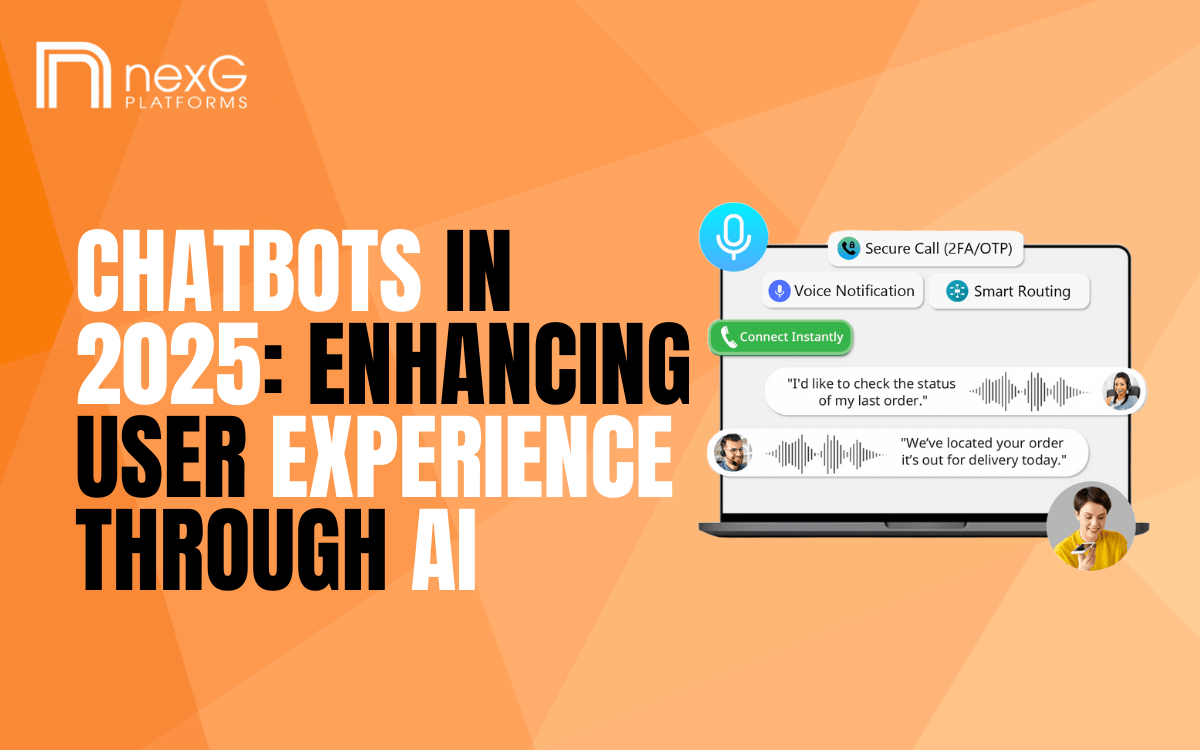Chatbots in 2025 are nothing like the basic scripted bots of the past. Over the last decade, these tools have evolved from simple FAQ responders into conversational AI solutions capable of understanding context, personalizing interactions, and driving real business results.
As artificial intelligence continues to advance especially in areas like natural language processing, predictive analytics, and machine learning businesses are finding that chatbots are no longer just nice-to-have. They’ve become customer engagement tools that can boost satisfaction, improve efficiency, and even open up new revenue streams.
In this blog, we’ll look at how AI-powered customer support is changing in 2025, what’s driving adoption, and the most impactful chatbot use cases for business right now.
The Evolution of Chatbots
Chatbots have had an interesting journey. The early versions were limited they worked from a fixed script, often frustrating users by repeating the same pre-programmed responses.
Now, with the integration of AI, chatbots can learn, adapt, and handle far more complex tasks. Here’s what has driven this transformation:
1. Natural Language Processing (NLP)
NLP allows chatbots to interpret human language, understand nuances, and even detect sentiment. This means that when a customer asks, “Can I return my order?” the bot understands both the question and the implied intent, offering a precise and relevant answer.
2. Machine Learning (ML)
With ML, chatbots improve over time by learning from past interactions. This ensures better, more accurate responses the more they’re used a core capability in AI chatbot trends 2025.
3. Integration with AI Technologies
Voice recognition, image scanning, and even predictive analysis are now part of advanced chatbot systems. This integration allows conversational AI solutions to engage with customers across voice, video, text, and even image-based channels.
Key Trends Defining Chatbots in 2025
If we look at the AI chatbot trends 2025, a few major shifts stand out:
1. Hyper-Personalization
The days of generic replies are gone. Chatbots now analyze customer data, purchase history, and browsing behavior to deliver truly tailored recommendations. Imagine asking about shoes and instantly getting size- and style-specific suggestions that’s where we are today.
2. Omnichannel Engagement
Customers expect a consistent experience whether they reach out via a website, WhatsApp, Facebook Messenger, or an app. Modern customer engagement tools ensure the conversation flows seamlessly across these touchpoints.
3. Proactive Outreach
Instead of waiting for a query, chatbots initiate contact. They can send delivery updates, personalized discounts, or reminders about abandoned carts. This shift turns them from reactive service tools into active sales drivers.
4. Expanded Role in AI-Powered Customer Support
From resolving billing issues to booking services, bots now manage tasks that once required multiple human agents. This not only improves efficiency but also frees staff to focus on more complex cases.
5. Voice and Visual Interaction
Voice-enabled chatbots are now mainstream, and some even process images to provide answers. For example, sending a photo of a damaged item can trigger an automated replacement process.
Top Chatbot Use Cases for Business
Here’s how different industries are applying chatbot use cases for business in 2025:
- Retail and E-commerce – Assisting with product searches, processing returns, recommending products, and tracking orders.
- Banking and Finance – Handling account inquiries, fraud detection, and guiding users through transactions securely.
- Healthcare – Scheduling appointments, providing symptom checks, and delivering post-care reminders.
- Travel and Hospitality – Managing bookings, suggesting itineraries, and sending real-time travel alerts.
- Telecom – Resolving connectivity issues, upselling plans, and processing payments.
Why Businesses Are Investing in Chatbots
1. Improved User Engagement
Chatbots in 2025 are built to keep users engaged. They provide instant answers, personalized content, and even upsell suggestions based on customer intent.
2. Cost Efficiency
By automating repetitive tasks, chatbots reduce operational costs without compromising service quality. For businesses with high customer interaction volumes, the ROI is immediate.
3. Scalability
Whether you have 100 or 10,000 simultaneous conversations, modern bots can handle the load without performance drops.
4. 24/7 Availability
Customers expect service on their schedule, not just during office hours. Bots make that possible.
Challenges Still Facing Chatbots in 2025
Even with all these advancements, businesses must navigate:
- Maintaining Human Touch – Too much automation can feel impersonal.
- Data Privacy – Customers want to know their data is secure when shared with AI systems.
- Complex Query Handling – Some nuanced requests still require human judgment.
Addressing these issues is critical for maintaining trust and adoption.
How to Maximize Value from Chatbots in 2025
To get the best from AI-powered customer support, companies should:
- Integrate with CRM Systems – This ensures the bot has all customer context available.
- Train with Real Conversations – Using real interaction data helps improve accuracy.
- Continuously Update – As products and policies change, chatbot scripts and models should be updated.
Blend AI with Human Support – Have a clear hand-off to human agents when needed.
The Future Outlook
Looking at AI chatbot trends 2025, the trajectory is clear: chatbots will keep getting smarter, faster, and more human-like in their ability to respond. As technology evolves, we can expect:
- Wider adoption of voice-first chatbots.
- More industry-specific pre-trained chatbot models.
- Integration with IoT devices for real-time support scenarios.
Whether you’re in retail, banking, healthcare, or travel, chatbots in 2025 are set to redefine how businesses interact with customers. They’re not just a tool for answering questions they’re becoming a key driver of sales, loyalty, and efficiency.
By embracing conversational AI solutions and focusing on the right chatbot use cases for business, companies can turn these customer engagement tools into real competitive advantages.
The businesses that win in 2025 will be those that balance automation with empathy, technology with trust, and efficiency with a personalized touch.


